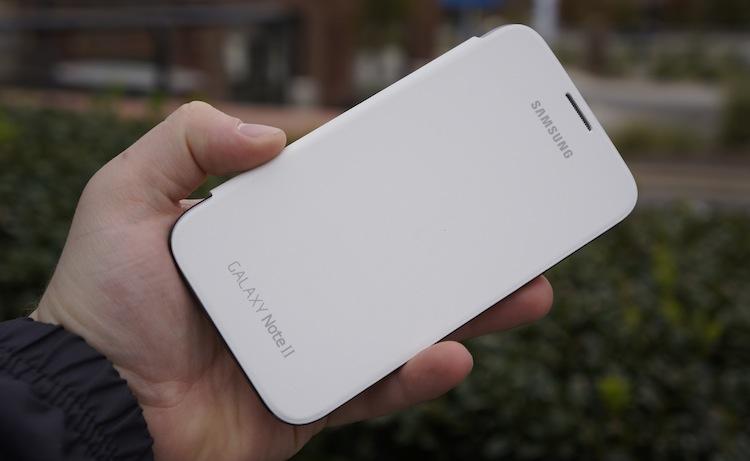
For the better part of two years, I've said that smartphones will eventually transgress beyond simply being mobile devices, that they will eventually become a staple in all the personal computing average consumers do. And, in their own right, they already have. My smartphone is used just as much for work and entertainment as it is a source of information, whether I'm sitting behind a PC, waiting in a line or laying on my couch.
My smartphone is 100 percent, totally integrated with my life and the way I live it. However, manufacturers and consumers have only unlocked a small portion of the potential of pocket-sized machines.
First was the Padfone by ASUS. Customers who purchased the Padfone could separately buy a tablet dock for the phone, which was effectively a battery-powered, mobile display. Instead of using two totally separate devices to get more than one form factor, users could alter a single device by add-on accessories.
Later, in September of last year, Korean device manufacturer KT unveiled the Spider series, a smartphone that came with several add-on peripherals. First was a laptop dock, which basically turned the Spider phone into a small, Android-powered laptop and used the smartphone's touchscreen display as the trackpad. Like the Padfone, there was also a tablet dock available, and KT supplied a gaming dock.
Motorola experimented in the area some, too, with its Webtops and Lapdocks. Motorola Android smartphone owners could optionally purchase one of Motorola's docks to unlock a truly unique and extended experience. Early last month, though, Motorola announced it would be phasing out Webtops, which it blamed on the poor performance of the products. (That said, we would like to believe it had something to do with the Google acquisition and that it was in favor of a phase two product.)
Then, in February, along came Canonical into the Android realm, creators of the popular Linux distro known as Ubuntu, with a software-based approach. The team announced Ubuntu for Android, which allowed both operating systems to share the same kernel, file system and to run side-by-side. On a device with Ubuntu for Android installed, a typical version of Android will run. But dock the smartphone to an external monitor and connect a mouse and keyboard, and a full-fledged version of Ubuntu will appear.
Unfortunately, this project has yet to really take off. Canonical explained they would be working with manufacturers to get the software pre-installed on devices – free of charge. But nothing has come of it just yet.
Sadly, the few manufacturers who have dabbled in the area have faced very limited success for a number of reasons. Namely, pricing. Starting at $500 (for essentially a display, battery, touchpad and speakers), Motorola's docks were quite expensive. The 16GB Padfone originally ran for around $850, whereas the 32GB and 64GB models were $100 and $200 more, respectively. And while the KT Spider pricing it's easy to track down, no one ever expected a phone with three peripherals would ever be outrageously affordable.

No less, Samsung is keeping the smartphone-as-a-PC dream alive. Flying in under the radar, Phandroid's Quentyn Kennemer discovered on Wednesday that there is a unique accessory for the Galaxy Note II on Samsung's website. Dubbed Smart Dock, it is hardly different from your typical smartphone dock, save for the various ports that litter its outer edge. Along the left and right sides are a total of three USB ports for connecting peripherals, such as a mouse, keyboard or flash storage drive. The back has a full HDMI port, micro USB port and a 3.5mm headphone jack. And the Galaxy Note II pops into the front of the dock, which has a retractable cover for when it's not in use.
In essence, paired with the proper monitor (or television, if that's your style), this dock turns your Note II into a desktop PC of sorts. And although it may be a tad overpriced at $99.99 (which actually isn't all that much more than most standard smartphone docks that don't do anything but charge), it's quite a neat accessory. It's perfect for those who want a larger display yet don't feel the need to power up their old tower PC when they get home to just browse the web. And, theoretically, it's perfect for people like me, who like to push their smartphones to the limit.
(For the record, if you're really frugal, you could just buy an MHL adapter, a Bluetooth keyboard and mouse and do exactly the same thing for a fraction of the price. But part of the price tag on this piece of kit is the ease of use. Dock the phone and have all the peripherals already plugged in and ready to go.)
But for $99.99, I would hope this device does at least a little more than output HDMI straight from your Galaxy Note II. At the very least, I would hope it translates the output interface to the tablet-optimized interface so games and applications are optimized for a larger display. It needs the finesse of a landscape home screen and multi-paned interfaces, not blown-up smartphone applications.
If nothing else, it will be great to keep around in the case Ubuntu for Android finally arrives. Just imagine Ubuntu for Android running on the Galaxy Note II. I'm drooling already.
I would be readying my credit card to buy one, but the site currently lists the device as out of stock. Once it's finally available, I may have to take the plunge and see just how great this dock works in practice. What say you, ladies and gents? Does the Galaxy Note II Smart Dock interest you at all? Or would you rather use a tablet or laptop for your more extensive computing needs?